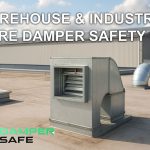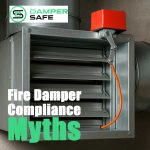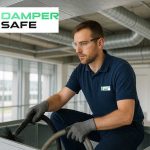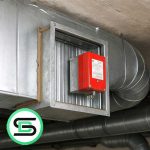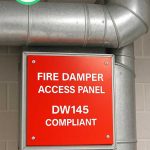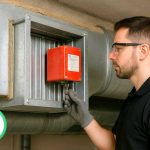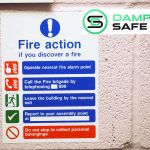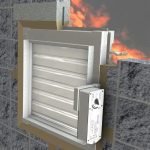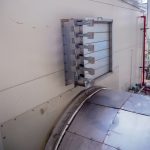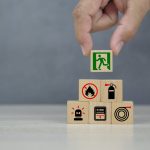The Role of Dampers in Protecting Residents
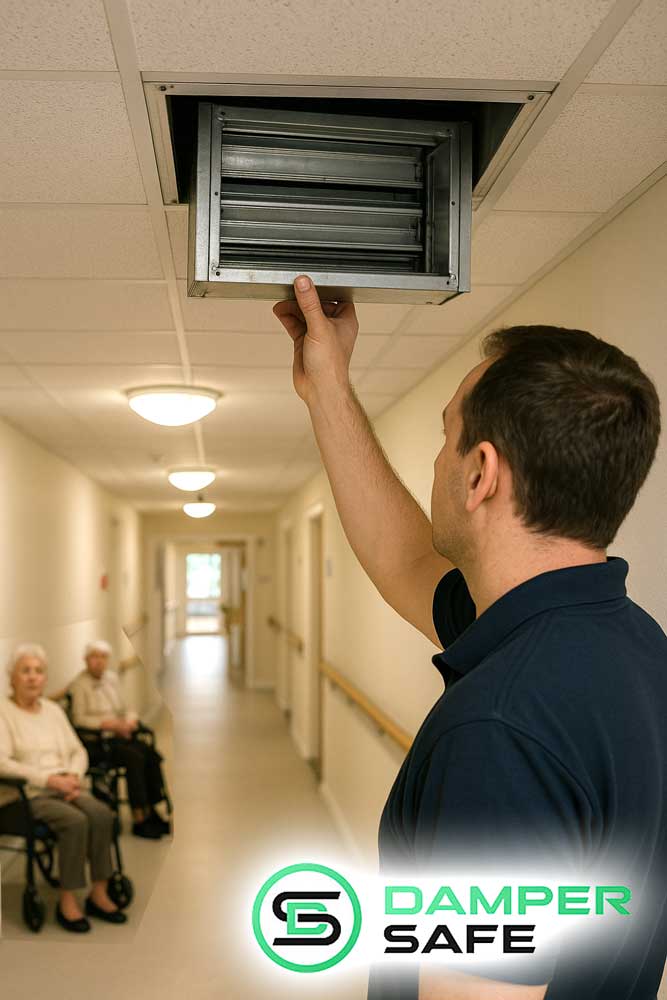 Why Fire Safety in Care Homes Is So Critical
Why Fire Safety in Care Homes Is So Critical
Care homes are among the most sensitive environments when it comes to fire safety. Unlike offices or schools, residents in care facilities often have limited mobility, cognitive conditions such as dementia, or health needs that prevent swift evacuation. That means every second counts.
A fire in a care home does not just threaten property — it endangers lives on a scale far greater than many other settings. While most people are familiar with fire doors, alarms, and sprinklers, fewer understand the vital role of fire damper compliance in protecting residents. These hidden but essential devices prevent fire and smoke from spreading through ventilation and ductwork, effectively buying time for a safe evacuation.
In this guide, we explore why fire dampers are so crucial in care home fire safety, what the UK regulations demand, common compliance gaps, and how Damper Safe Ltd supports care providers in meeting their legal and moral responsibilities.
The Unique Fire Risks in Care Homes
Care homes face a combination of risks that make them especially vulnerable to the spread of fire:
- Vulnerable occupants – elderly residents, often bed-bound or with mobility challenges, require longer evacuation times.
- Complex building layouts – multiple wings, floors, and corridors mean that once fire enters ductwork, it can travel rapidly across the facility.
- High fire loads – oxygen equipment, medical devices, kitchens, and laundry rooms create potential ignition and spread points.
- Staffing ratios – with fewer carers than residents, building systems must provide maximum protection while staff organise evacuations.
These factors mean care homes cannot rely solely on surface-level fire protection. They need an integrated approach where fire dampers play a frontline role in compartmentalising fire and smoke.
What Exactly Do Fire Dampers Do?
Fire dampers are installed within ventilation and ductwork systems. Under normal conditions, they allow air to flow freely throughout a building. But when a fire occurs, the heat triggers them to close — either through a fusible link that melts at high temperature or by motorised/electrical activation.
By closing, they:
- Prevent fire and smoke from travelling through ducts and spreading between floors or rooms.
- Protect escape routes such as corridors and stairwells, keeping them smoke-free for longer.
- Support evacuation and firefighting by containing the fire within a specific compartment.
In a care home environment, this role is particularly critical. Residents may not be able to self-evacuate, so systems must ensure that fire and smoke are slowed enough for carers and emergency services to act. Without functioning dampers, fire can spread unseen through ceiling voids and ducts, overwhelming escape routes in minutes.
Fire Damper Compliance in UK Care Homes
The UK has strict requirements for fire safety in care facilities, shaped by a series of fire incidents over the past two decades. Duty holders must be able to demonstrate full compliance under several pieces of legislation and guidance.
Key Regulations and Standards
- The Regulatory Reform (Fire Safety) Order 2005 (FSO): Requires the “responsible person” (often the care home manager or provider) to ensure fire risk assessments and systems are in place.
- The Building Safety Act 2022: Strengthens accountability, particularly in high-risk residential buildings.
- BS 9999: Code of Practice for Fire Safety in the Design, Management and Use of Buildings: Guides fire safety management and system integration.
- BS EN 1366-2: Specifies test methods for fire resistance of dampers.
- DW145: Guide to Good Practice for the Installation of Fire and Smoke Dampers — industry reference for correct damper installation and maintenance.
- CQC Regulations: The Care Quality Commission expects providers to demonstrate effective fire safety systems, including maintenance and inspection of fire dampers.
Testing Requirements
Current guidance recommends that all fire dampers be inspected and tested at least annually by a competent professional. In high-risk environments, such as care homes, some duty holders opt for six-monthly inspections for added assurance.
Source: UK Government – Fire safety in residential care homes
Common Failures Found in Care Homes
Many care facilities fall short of full compliance. The most common issues include:
- Inaccessible dampers – installed without proper access doors, making inspection impossible.
- Blocked or painted-over dampers – often after refurbishment or redecoration, reducing effectiveness.
- Missed maintenance cycles – annual testing overlooked due to lack of awareness or budget pressures.
- Poor record-keeping – no clear maintenance logs, leaving managers unable to evidence compliance during audits or inspections.
- Untrained staff – facilities teams not informed about the role of dampers or how building changes affect fire safety.
Best Practices for Care Home Fire Damper Safety
- Commission regular testing – annual inspections by accredited professionals, with more frequent checks if your fire risk assessment identifies heightened risks.
- Keep clear records – document all inspections, maintenance, and remedial works for CQC and fire risk assessments.
- Ensure proper installation – compliance with DW145, including accessible test doors.
- Train staff – awareness sessions for facilities and maintenance staff on recognising issues like blocked access or modifications to ductwork.
- Invest in intelligent monitoring – larger providers can consider digital damper monitoring for real-time compliance assurance.
- Plan remedial works quickly – don’t let minor issues build up; faulty dampers should be repaired or replaced without delay.
The Human Impact: Beyond Compliance
Statistics show that fires in care homes, while not everyday events, can have devastating outcomes. Evacuations are slower, smoke spreads quickly, and the consequences for vulnerable residents are severe.
When fire dampers work as intended, they can save lives by preserving breathable air and safe exit routes. This isn’t just about meeting CQC expectations or ticking a compliance box — it’s about protecting elderly residents, giving families peace of mind, and ensuring carers have the best chance to keep people safe.
Why Choose Damper Safe Ltd for Care Home Fire Damper Compliance?
At Damper Safe Ltd, we understand the unique challenges care facilities face. With over a decade of experience in the field, we specialise in fire damper compliance across sensitive environments, including healthcare, schools, and residential care.
- Fully accredited engineers trained in DW145 and BS standards.
- Comprehensive testing and maintenance programmes tailored for care homes.
- Clear, compliant reporting to satisfy CQC and fire authority inspections.
- Trusted by multiple sectors across the UK to protect lives and property.
When you work with us, you’re not just meeting regulatory requirements — you’re creating a safer environment for residents and staff.
Protecting the Most Vulnerable
Fire damper compliance in care homes is not optional. It is a legal requirement, a moral duty, and above all, a lifeline for residents who cannot protect themselves.
By prioritising regular inspections, proper installation, and professional maintenance, care home managers can ensure that their facilities are fully prepared should the worst happen.
Damper Safe Ltd is here to help you achieve full compliance, with our fire damper testing service avoid costly failures, and most importantly, protect the lives of those in your care.

